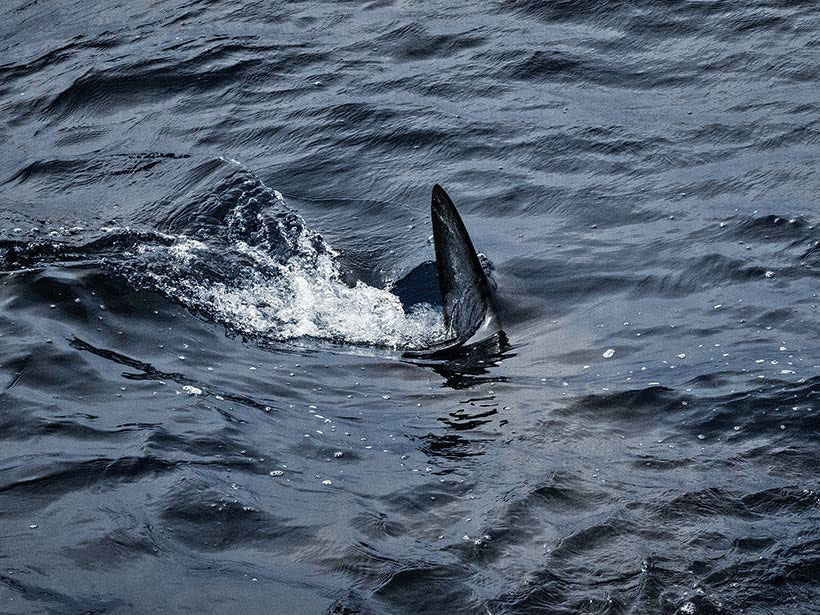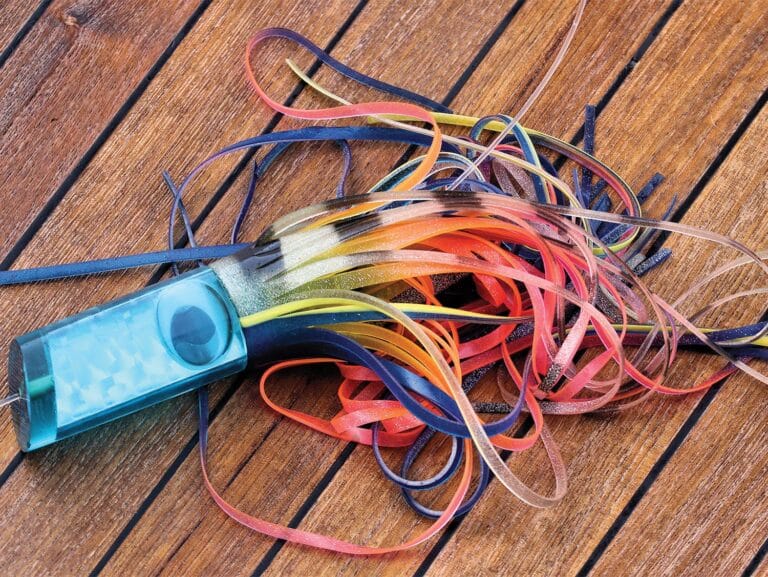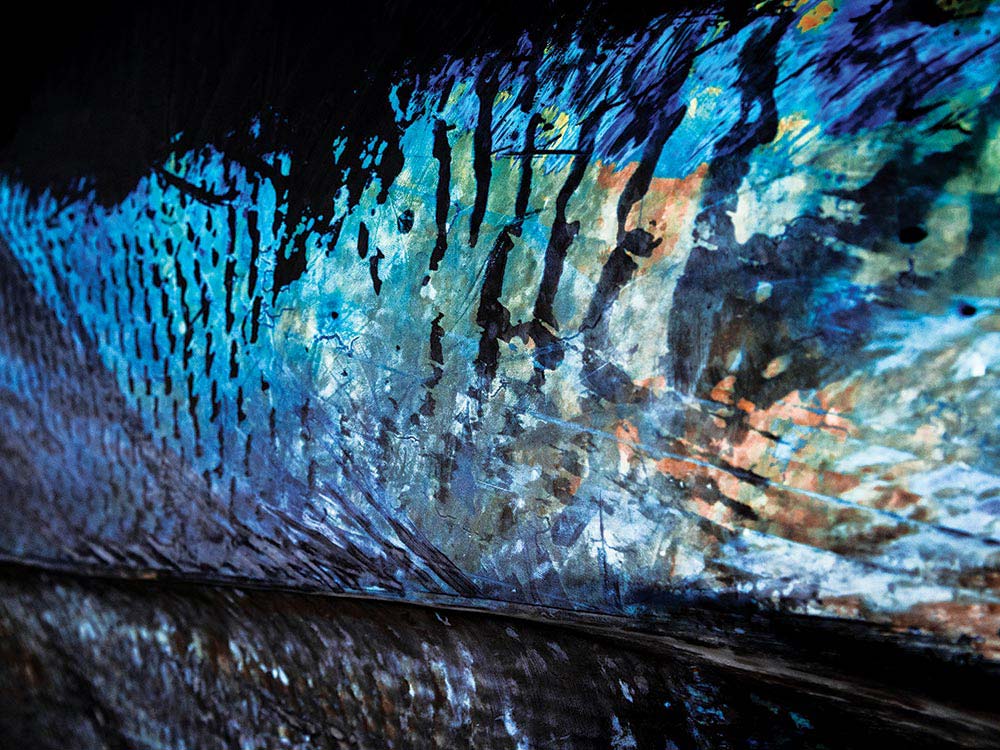
Snap, crackle, pop. It’s not the harmony produced when you add milk to a bowl of Rice Krispies in the morning; it’s the sound of the line peeling off a 130 against nearly 50 pounds of drag — the kind of pressure you don’t want to battle for very long. The third hour has come and gone as we work the giant bluefin off the North Carolina coast. I’ve been locked into the fight for far longer than any of us had expected, and the continuous game of give and take doesn’t seem to be ending anytime soon. Gain 30 yards, immediately lose it. Work your ass off to get it back, and there it goes again. The fish is not happy.
The Call
You have plenty of time to think when you’re strapped into a fighting chair and tied into a big fish for that long: I flash back to the days leading up to this last-minute trip to Oregon Inlet to fish with my good friend Capt. Chris Kubik aboard Point Runner. Kubik and I have known each other for quite some time from his days as the mate on Qualifier with Capt. Fin Gaddy, and we’ve had plenty of memorable days chasing sails off Isla Mujeres, Mexico, as well as fishing in several tournaments in Hatteras.
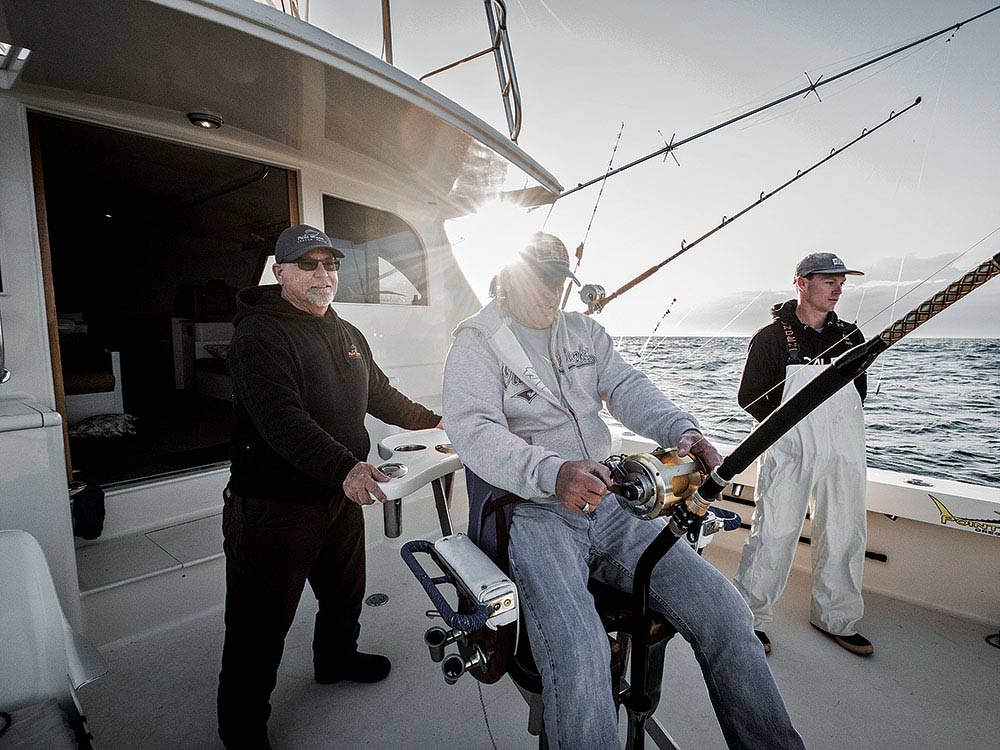
This past fall during a random phone conversation that segued away from the typical football banter, I mentioned to him that I’d always wanted to experience the giant bluefin tuna fishery off the Outer Banks. It’s a historic fishery and one that I believe is overshadowed by the highly acclaimed giant bluefin fishery off Prince Edward Island and Nova Scotia. That was on my bucket list too, but Kubik promised that when the bluefin showed up off the North Carolina coast in the spring, as they usually do, and there was a window of pretty weather, he would call me … and he did.
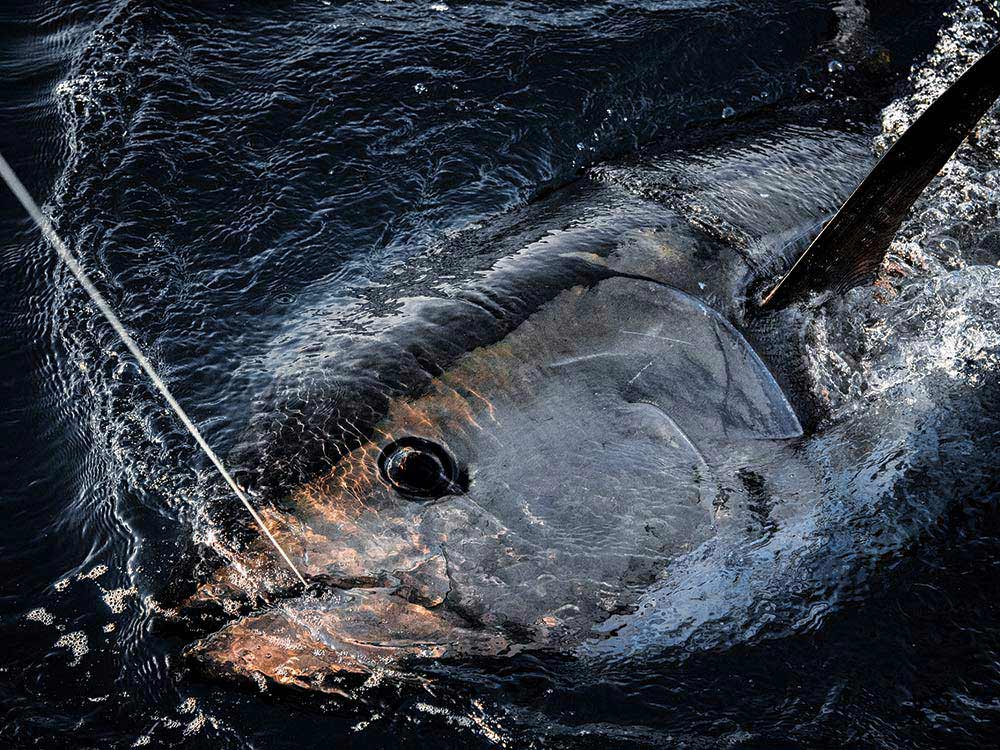
“What’s Tuesday look like?” Kubik asked from the other end of the line. Moments before, I was cleaning up the boat from a day on the water in South Florida. I quickly did a mental check of potential schedule conflicts before realizing my calendar was pretty much empty for the week. “The tuna are balling bluefish on the surface right now … nice ones, 300- to 400-pounders. One of the guys had five or six bites a couple of days ago, and a couple of the commercial guys were basically hand-feeding the fish they wanted,” Kubik continued, as I thought about the logistics — I was going to make the trip work.
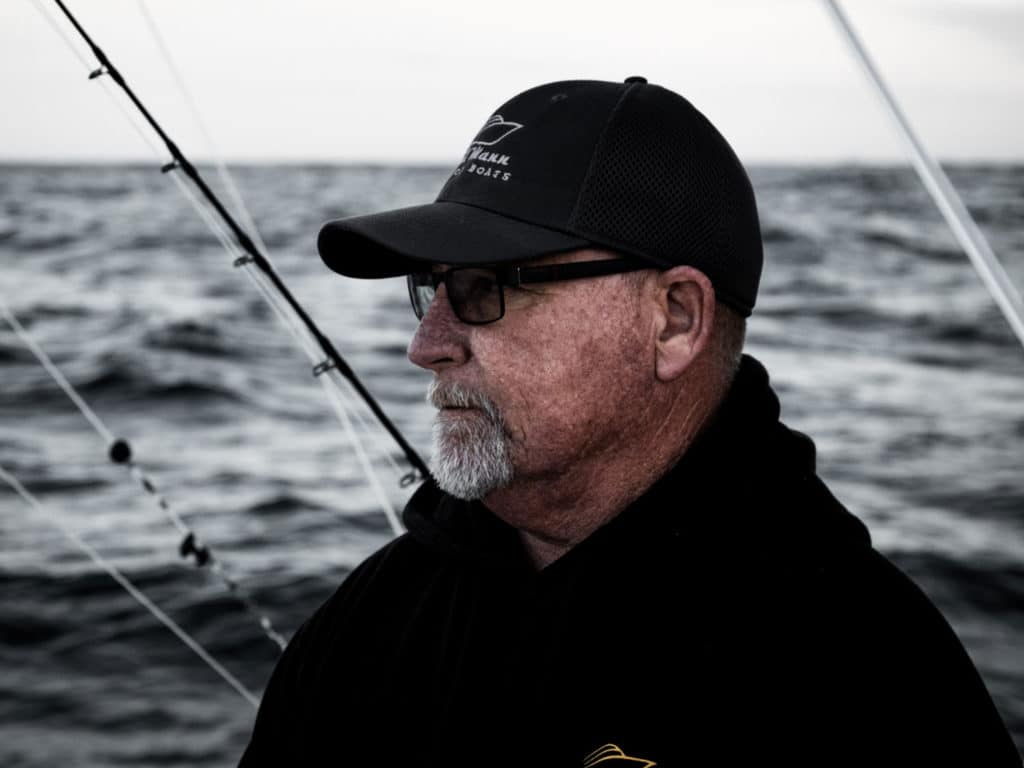
Night Maneuvers
Two days later, I touched down in Norfolk, Virginia, a little before 10 p.m., and drove the two hours south to Manteo before checking into my hotel and trying to catch a couple of hours of sleep. The only problem was my adrenaline was already kicking with high hopes of just seeing a giant bluefin sky on a fleeing bluefish. Sure, sailfish and marlin take to the air when on the other end of a line, but I always find it astonishing when we are kite-fishing and see a king mackerel come out of the water on a bait. To see something the size a VW Beetle launch from the water chasing a 5-pound bluefish would be taking things to an entirely different level.
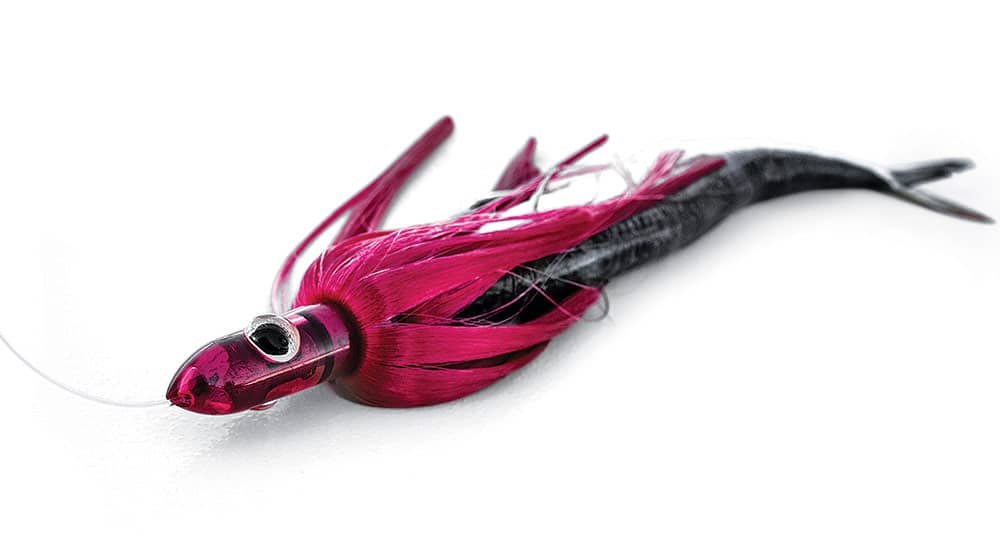
Due East
And it didn’t take long once we arrived on the fishing grounds about 30 miles due east of Oregon Inlet to find activity everywhere on the surface. Paul Mann took a day off from boatbuilding to join us for the day offshore as another designated “reel cranker,” and it was nice catching up with him because it had been a couple of years since we shared a cockpit. It wasn’t 15 minutes after putting lines in the water that Kubik spotted bluefin balling bait on the surface as massive splashes erupted from the water. Minutes later, the scream of the drag — even with the clicker turned off — erupted from the rod in the right-flat position. Bill Quale, Kubik’s uncle, situated himself in the chair, and Mann worked the rod from the rod holder over to the chair as Quale pushed the drag up to strike, which was preset at 38 pounds.
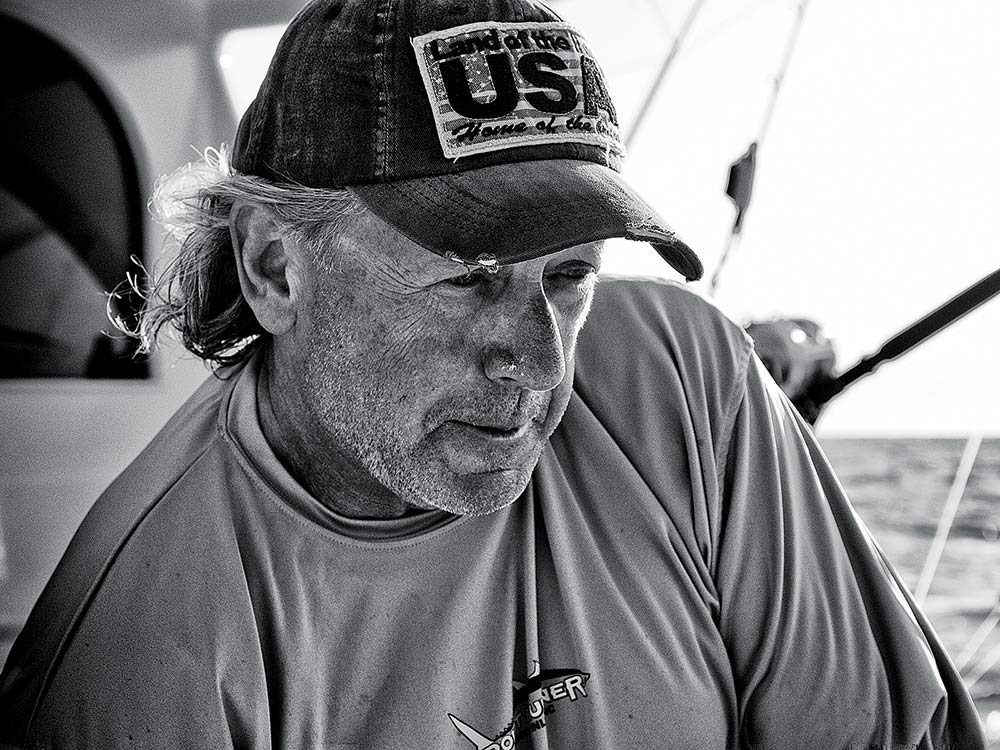
The line continued to peel off the spool as if the fish didn’t even notice the drag on the 80 wide. And unlike PEI where captains target bluefin in less than 200 feet of water, we were fishing “overboard” in 4,200 to 5,400 feet, which creates a whole new set of challenges for the crew. After 45 minutes, the 93-inch fish, estimated at 350 to 400 pounds, was at the boat. Quale was glad the battle was over, and the smile on his face was unforgettable — it was definitely a battle and a fish he will never forget.
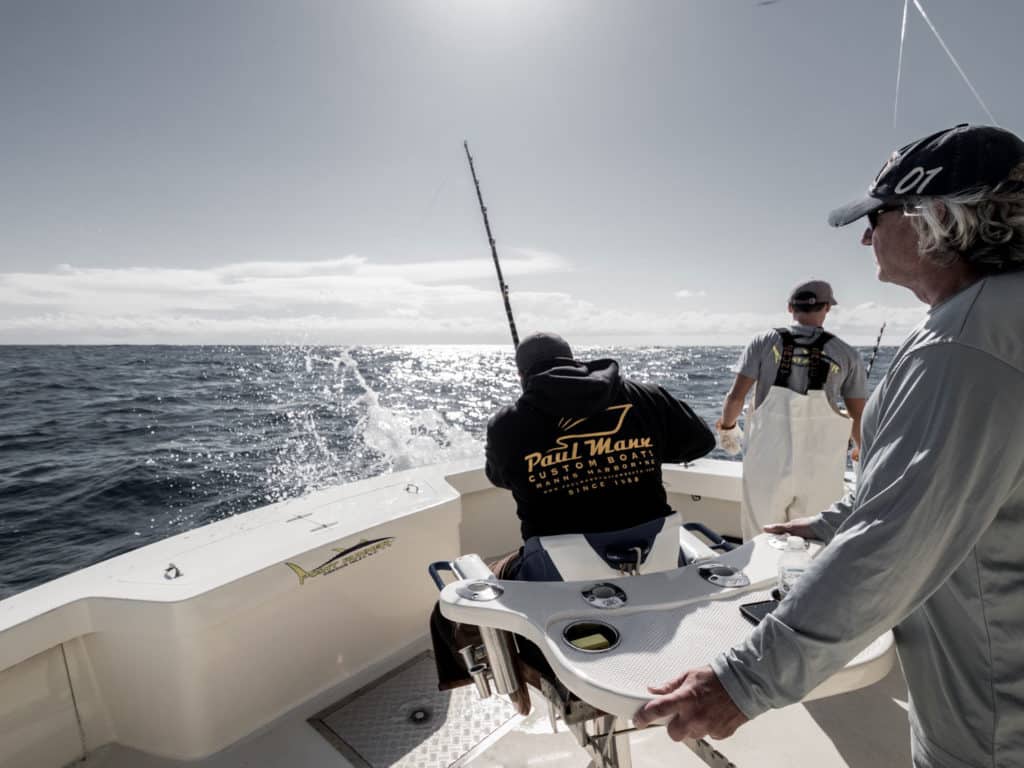
Let’s be honest: The most exciting seconds are the bite and the initial run; the fight can be just pure work, and Paul Mann knew that. About an hour later, the 130 wide connected to the bait Mann had just adjusted in the spread began to hum — the kind of unforgettable humming sound generated when line streaks off a reel loaded with drag and the clicker turned off. But Mann was no rookie: He worked the rod over to the chair and pushed the drag up well past strike and held on. It’s a spectacle to witness someone dig into battle at 60-plus pounds of drag, and Mann put on a clinic as he put the heat on the fish to eliminate any kind of long run before rhythmically gaining line back. One thing was for sure, this bluefin was larger than the first as the load generated between the combination of fish and drag put a bend in the broomstick of a rod. And then just like that, the line went slack and the fish was gone: the price you sometimes pay when pushing yourself and the tackle to the limit.
That meant one thing — I was next — and it didn’t take long for the 130 to start singing the bluefin blues again.
The Final Push
“Are we getting anywhere?” Kubik calls down from the bridge as he snaps me out of my daydream of recounting the whirlwind of the past 36 hours. I’m at a standstill. Lucas Jolly, Kubik’s mate, had fastened a floss mark to the line earlier in the fight to provide us with an indication of where we were. The piece of black floss is my best friend and my worst enemy: a success when it reaches the rod tip or under a few yards of mono on the reel, or a defeat when I watch it descend below the surface as the bluefin retakes line. The pattern is consistent: I could work the giant bluefin to a certain spot in the water column, and then it would not budge another inch. I think there has to be a thermocline of some sort, but nothing is showing up on the sounder. We found out later from a commercial fisherman that the impenetrable barrier was a line of jellyfish at 120 feet — they had also had issues with stubborn bluefin that just wouldn’t pass through the layer.
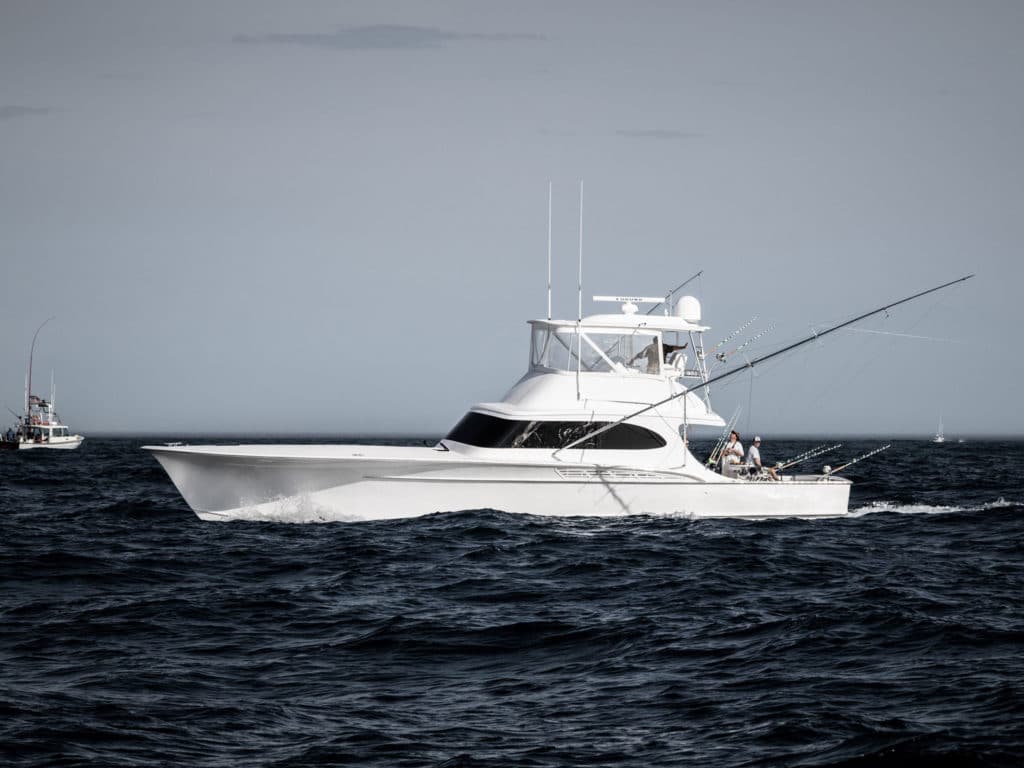
We continue to try every trick in the book, and then some: up-sea, down-sea, stretching the line out, getting right on top of the fish, tight forward turns to port and tight forward turns to starboard. Some work better than others, and some, to my dismay, flat out put us at a disadvantage. Thankfully, Mann keeps me well-hydrated with Gatorade and well-fed with Oreos and apples — quick bites to put something back in the tank. I even consider having Jolly cut the legs off my jeans because I’m drenched in sweat, but I can only think of how I’d look wearing jorts in a photo for the magazine. Meanwhile, time is ticking by as I keep constant pressure on the fish in the fighting chair. I know if I let up the pressure, even for a moment, the big bluefin would take advantage of it.
Sunset
The fish is the meanest damn thing I’ve ever battled — I hate it and love it at the same time. As soon as the clock hits the fifth hour, I holler up to Kubik that I need to make a decision because every inch of my body is fatigued from straight-legging the fish in the chair. I’m really not sure how much longer I can keep applying the same amount of torque on the fish: I don’t want to tap out, but I also don’t want to have the same outcome as Mann’s bluefin, with the entire five-plus-hour battle being for nothing. I do it anyway and slowly work the drag up near full — over 65 pounds — and then all the way, to almost 70 pounds.
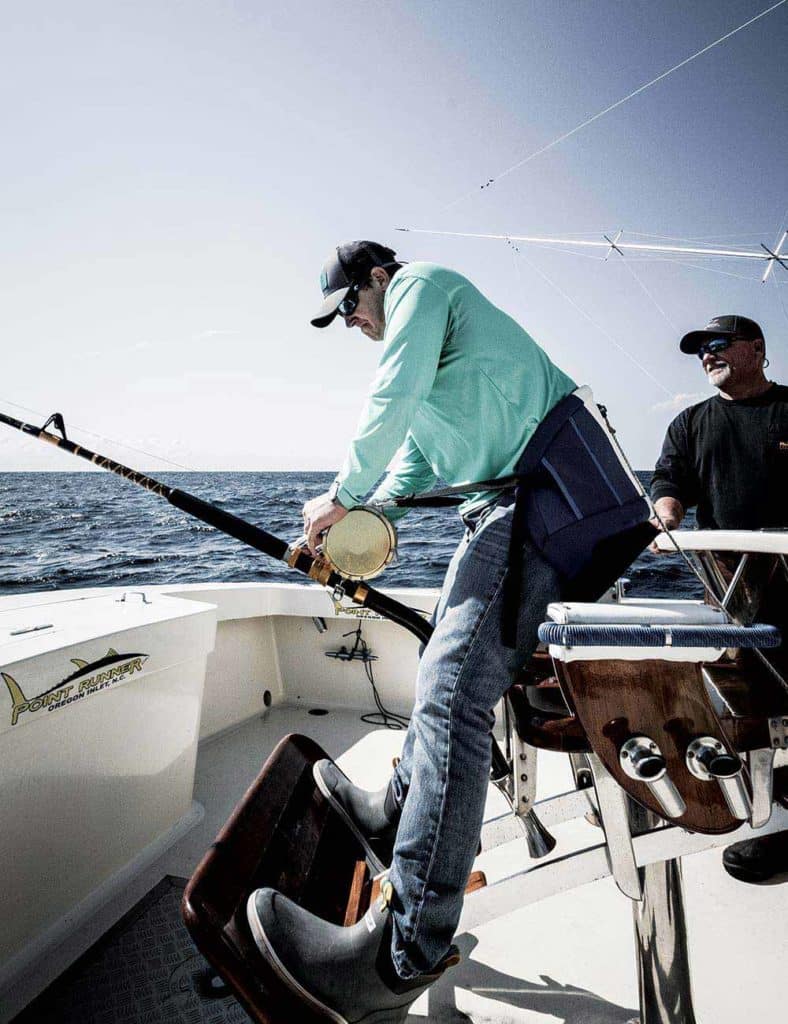
We match the pinwheel. I gain line every time the giant circles toward the boat, and I grab the spool with one hand and the back of the chair with the other when the fish begins to turn away. I refuse to give an inch despite the bluefin’s incredible force as it tries to pull against me; the agonizing process begins to work, and the floss marker is soon buried under the newly gained line. Six to eight rounds of this game of back and forth, and there is color down below; another couple and there it is: the giant bluefin on the surface.
My worst nightmare at this point with the fish on the leader is for the tuna to sound again; I pray that Jolly doesn’t have to dump the leader, allowing the giant bluefin to descend back into the depths. I physically have nothing left in me to battle it out for another five hours. But Jolly holds onto the leader and refuses to let go each time the fish circles away from the boat. The end is in sight, then it happens in a flash: “He’s on it!” yells Kubik from the bridge as Jolly begins to pull the estimated 725-pound bluefin boatside. A giant splash erupts as a 500-pound mako leaves a red cloud in its wake. The fight is over.
